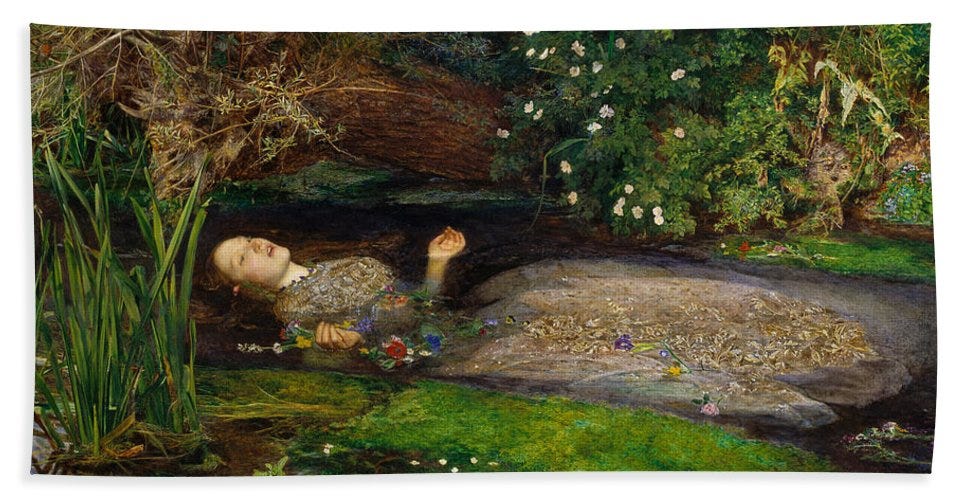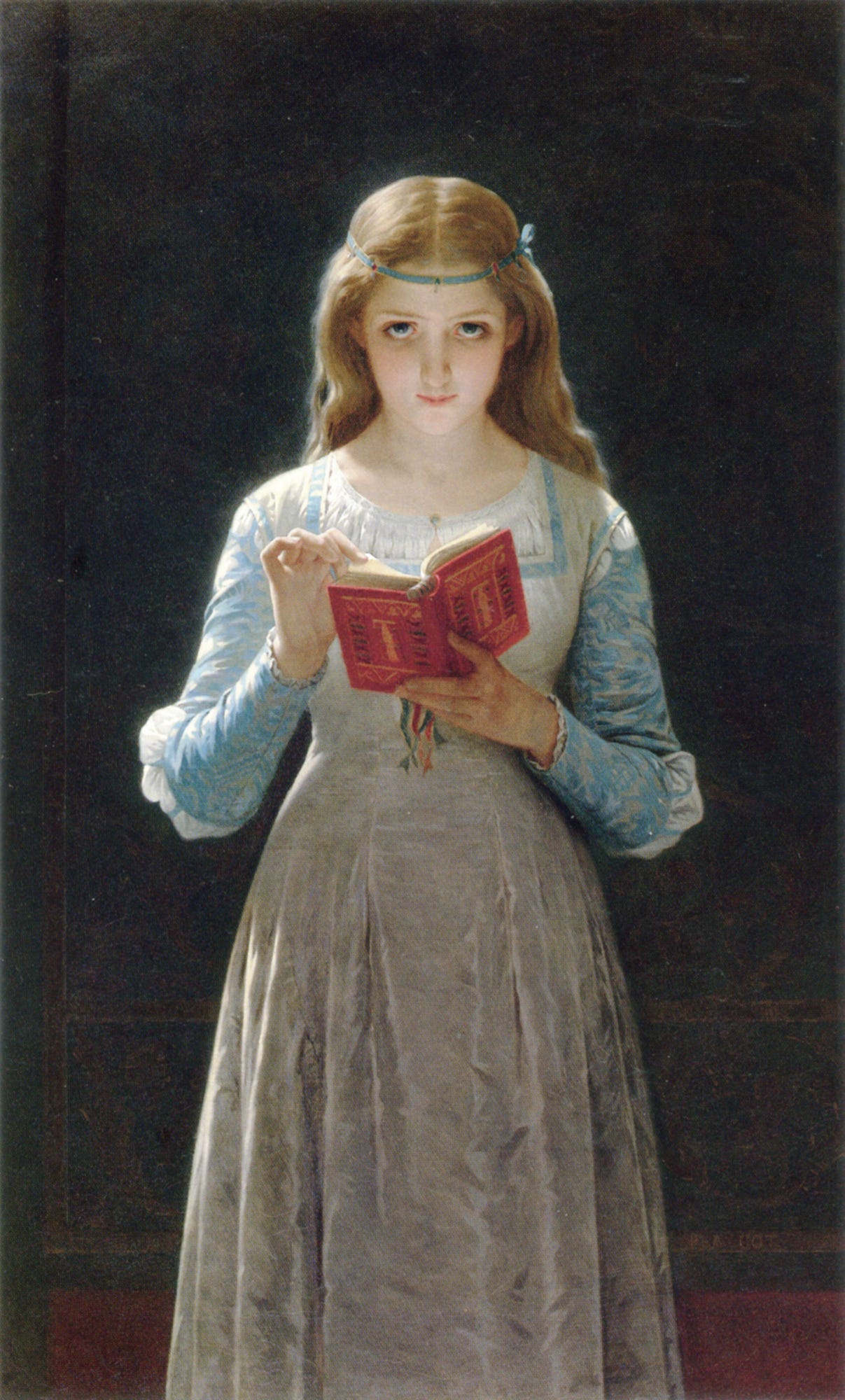Incapable of her own distress
Taking a look at one of Shakespeare's most tragic heroines, Ophelia
I’ve been fascinated by Ophelia since I first read Hamlet in twelfth grade. I’d known about Ophelia in the vague, collective way people know that Romeo and Juliet die at the end of their tragedy, that Bottom gets the head of an ass, and that, of course, Ophelia drowns. I was excited to learn more about this character I knew so little about, pulled in by her beautiful sounding name and wondering how she ended up drowning in the end.
Ophelia is a character that has captivated many, from John Everett Millais’ and many other artists paintings that typically portray her madness and/or her death, Lisa Klein’s 2006 Young Adult novel Ophelia that was later turned into a film of the same name starring Daisy Ridley in 2018. In 2016 the Lumineers wrote a song using her name, even one of Uranus’ moons is named after Ophelia.
And it’s fascinating because of how little she appears in the Hamlet. According to Elaine Showalter’s article “Ophelia, gender and madness,” she appears “in only five of the play’s 20 scenes” and according to Open Source Shakespeare has a total of 58 lines of speech, and in much of that dialogue she asks questions or obeys and acts the way the men in her life tell her to. It is only in her madness that she gets to speak at length, singing bawdy songs and acting as a sort of flower girl as she gives Claudius, Gertrude, and Laertes flowers that hold deeper meanings. Before audiences meet Ophelia in her madness a Gentleman comments that while “Her speech is nothing,” some listeners may “think there might be thought” to what she’s saying (4.5. 7, 12). Horatio comments after that words could be dangerous to “ill-breeding minds,” revealing that Ophelia only holds power and agency as a madwoman (4.5. 15).
So I want to talk about Ophelia, partly because she’s a character I’ve been interested in for a long time, partly for research, partly because I’m an English major with a minor in Theatre and Film and maybe that could be useful here. It’s a mismatch of many things but in the end what I really want to do is try to give Ophelia, this character so known for her silence, a chance to speak. And I hope that maybe I can pique your interest and learn something new along the way.
Sources:
“Ophelia (moon).” Wikipedia, Wikimedia Foundation, (if different from website title), 15 March 2022, https://en.wikipedia.org/wiki/Ophelia_(moon).
“Speeches (Lines) for Ophelia in ‘Hamlet’ Total: 58.” Open Source Shakespeare. George Mason University.
Cot, Pierre Auguste. Ophelia (Pause for Thought). 1870.
Klein, Lisa. Ophelia. Holtzbrinck Publishers, 2006.
Millais, John Everett. Ophelia. 1894, Tate Gallery, United Kingdom.
Ophelia. Directed by Claire McCarthy, performances by Daisy Ridley, Naomi Watts, Clive Owen, George Mackay, Tom Felton, 2018.
Schultz, Wesley and Fraites, Jeremy (The Lumineers). “Ophelia. Cleopatra. Dualtone Records, 2016. YouTube.
Showalter, Elaine. “Ophelia, gender and madness.” British Library, British Library Board, 15 March 2016. https://www.bl.uk/shakespeare/articles/ophelia-gender-and-madness.





